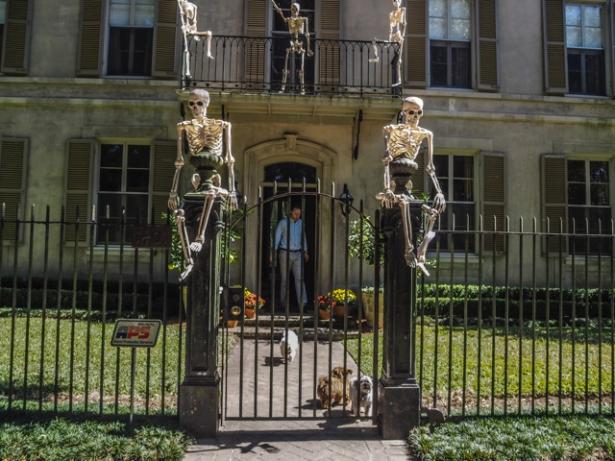Candy corn has been around since the 1880s, and, though it continually pops up on lists of worst Halloween candy ever, its story is still one of perennial success.
Moose A. Moose, the pint-sized yellow cartoon moose who starred on Nick Jr.’s now-defunct children’s show, Moose and Zee, was known for his Halloween song, I Don’t Like Candy Corn. Moose says he would rather eat his feet. And Moose is not alone. It turns out that lots of people don’t like candy corn.
In fact, candy corn just might be the Halloween equivalent of fruitcake: a holiday food that everybody has, but nobody actually eats.
Traditionally—though nobody knows for sure —candy corn is said to have been invented in Philadelphia (home of the cheesesteak) by candymaker George Renninger of the Wunderle Candy Company. In 1898, George’s recipe was picked up by the Goelitz Confectionary Company, which rapidly became the nation’s largest produce of fake corn. It was marketed creatively as “Chicken Feed,” in a box with a rooster on the front.
The original candy corn wasn’t targeted at trick-or-treaters. Though Halloween has a centuries’-long tradition of costumes, pranks, and treat-begging, in the United States the annual practice of trotting from door to door collecting candy only took off in force in the late 1940s, with the lifting of World War II sugar rations. Instead, as Chicken Feed, candy corn was intended to appeal to Americans’ largely agricultural roots. At the turn of the 20th century, the country was still largely rural, and about half the nation’s labor force lived on farms. Confectioners, hoping to tie in to the farm-and-harvest spirit, also turned out candy pumpkins, turnips, chestnuts, and clover leaves. The original candy corn was touted as a treat to be eaten all year round.
Today Goelitz, now the Jelly Belly Candy Company, continues to make candy corn from the same cloying 19th-century recipe, though they’re now better known for flavored jellybeans and Harry Potter Chocolate Frogs. And despite its detractors, we continue to consume a lot of it. According to the National Confectioners Association, over 35 million pounds—that’s nine billion kernels—of the stuff will be produced this year, much of it for the Halloween candy market.
The recipe, still pretty much what it was in the 1880s, is a mix of sugar, fondant, corn syrup, vanilla, and marshmallow creme, variously colored yellow, orange, and white, and poured into kernel-shaped molds. The kernels were once laboriously made by hand; today the process is fully mechanized. (Check out the candy corn video segment from the History Channel’s Modern Marvels.)
Of those who eat it, one poll showed that 43 percent of us nibble, nipping off the narrow white end first; a contrarian 10 percent prefer to start at the larger yellow end; and 47 percent simply pop the things in their mouths and eat them whole. On the other hand, according to a 2013 National Confectioners Association survey, when it comes to Halloween treats, 72 percent of Americans much prefer chocolate. Candy corn trailed behind in second place, the choice of a mere 12 percent. Probably the people whose kids failed to come home with Kit Kat bars.
Candy corn invariably pops up on lists of “Worst Halloween Candy,” a shifting and sugary ranking that also, depending on the list, features flavored Tootsie Rolls, bubblegum, Necco wafers, and pumpkin Peeps. Smarties —described as tasting like chalk—appear regularly among the rejects; so do Dots, a gumdrop-shaped chewy candy with a consistency occasionally compared to rubber cement; and Circus Peanuts, which have nothing to do with peanuts, but are made of banana-flavored marshmallow, dyed orange.
Still, candy corn remains a Halloween icon, as much a part of the holiday as jack-o’-lanterns, pirate outfits, and hot cider. With the help of some colorful tweaking, it’s even slowly expanding its range to other seasons: we now have reindeer corn (red and green for Christmas), cupid corn (red and pink for Valentine’s Day), bunny corn (green, pink, and lavender for Easter), and even freedom corn (red, white, and blue for the Fourth of July).
Rebecca Rupp has a Ph.D. in cell biology and biochemistry, and is the author of more than 200 magazine articles and nearly two dozen books for children and adults.


Spread the word